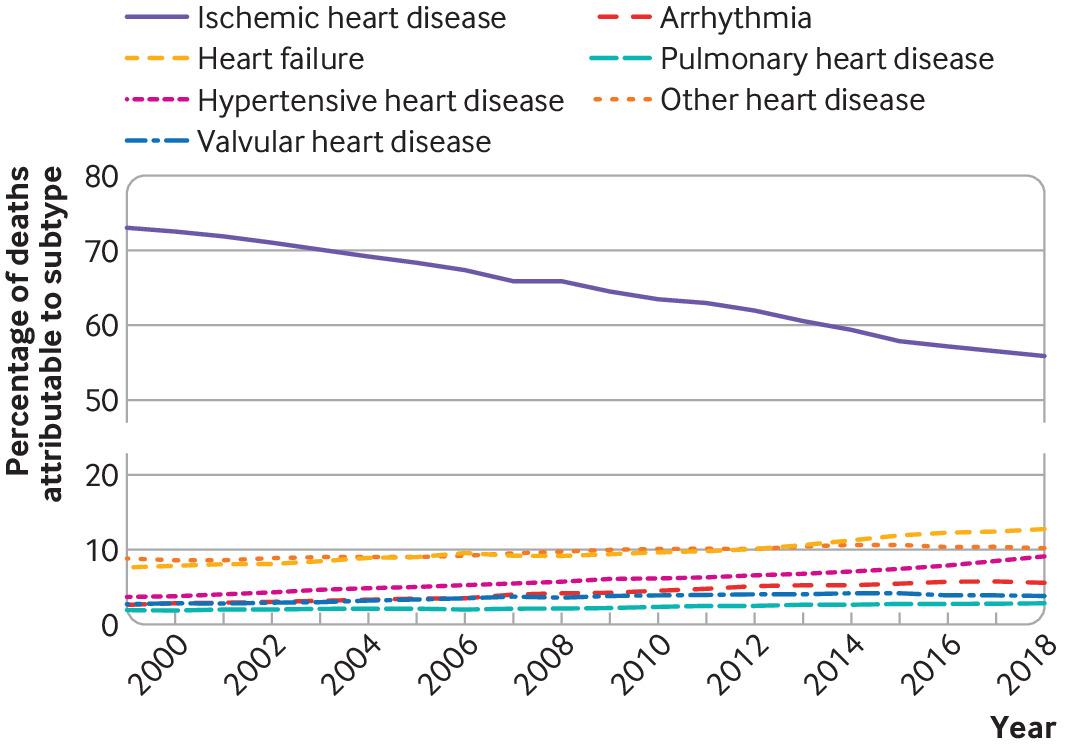Chemicals In Household Plastics: Potential Link To Higher Heart Disease Mortality Rates

Table of Contents
Types of Harmful Chemicals in Household Plastics
Numerous chemicals used in the manufacturing of plastics are raising concerns about their potential impact on human health, particularly cardiovascular health. Several stand out for their potential link to increased heart disease mortality risk.
Phthalates
Phthalates are a group of chemicals used to soften and increase the flexibility of plastics, commonly found in products like shower curtains, vinyl flooring, and certain food packaging. Exposure to phthalates has been linked to various health problems, including endocrine disruption.
- Phthalate-containing products: Toys, personal care products (such as lotions and shampoos), food packaging, and medical devices.
- Studies linking phthalates to heart disease: Research suggests a correlation between phthalate exposure and increased risk of cardiovascular disease, including coronary artery disease and hypertension. Studies have shown associations between higher phthalate levels in the body and increased risk of heart problems and premature death from cardiovascular causes.
Bisphenol A (BPA)
Bisphenol A (BPA) is another concerning chemical, primarily used in the production of polycarbonate plastics (often found in reusable water bottles) and epoxy resins (used to line food cans). BPA is an endocrine disruptor, mimicking or interfering with the body's hormones.
- BPA-containing products: Water bottles, food can linings, some dental sealants, and thermal paper receipts.
- Research on BPA and cardiovascular issues: Studies indicate that BPA exposure may contribute to cardiovascular problems by affecting blood pressure, cholesterol levels, and the development of atherosclerosis (hardening of the arteries). Research suggests a potential link to increased risk of heart attack and stroke.
Other Harmful Chemicals
Beyond phthalates and BPA, other chemicals found in plastics warrant consideration due to their potential cardiovascular implications.
- Polyvinyl Chloride (PVC): PVC production involves the use of several potentially harmful chemicals, and exposure to PVC during manufacturing and processing has been linked to various health problems, raising concerns about potential cardiovascular risks. Studies on PVC's impact on cardiovascular health are ongoing, but early research shows associations with immune disorders which may later increase risk of cardiovascular disease.
- Flame Retardants: Certain flame retardants used in plastics can disrupt hormone function and contribute to inflammation, potentially increasing the risk of cardiovascular disease. Further research is needed to understand completely the impact of various flame retardant chemicals on cardiovascular health.
Mechanisms Linking Plastic Chemicals to Heart Disease
The exact mechanisms through which chemicals in plastics contribute to heart disease are complex and not fully understood, but several pathways are implicated.
Endocrine Disruption
Many plastic chemicals are endocrine disruptors, interfering with the body's hormonal system. This disruption can affect various physiological processes crucial for cardiovascular health.
- Hormonal pathways affected: Endocrine disruption can influence hormones like estrogen, testosterone, and thyroid hormones, all of which play a role in regulating blood pressure, cholesterol levels, and blood clotting.
- Hormonal imbalances and heart disease: Imbalances in these hormones can increase the risk of developing hypertension, atherosclerosis, and other cardiovascular diseases.
Inflammation and Oxidative Stress
Exposure to certain plastic chemicals can trigger inflammation and oxidative stress within the body. These processes damage blood vessels, promoting the development of atherosclerosis and other cardiovascular problems.
- Processes involved: Inflammation leads to the thickening and hardening of artery walls, while oxidative stress damages cells and tissues, increasing the risk of heart disease.
- Scientific evidence: Studies have shown a strong link between chronic inflammation and oxidative stress and the development of cardiovascular diseases.
Other Potential Mechanisms
Other potential mechanisms are under investigation. These include direct effects on blood vessel function, alterations in lipid metabolism (fat processing in the body), and changes in the gut microbiome, all of which can contribute to the development of cardiovascular disease.
Reducing Exposure to Harmful Chemicals in Plastics
Reducing exposure to harmful chemicals found in plastics is crucial for protecting cardiovascular health. Several strategies can be implemented:
Choosing Safer Alternatives
Opting for alternatives to plastic products made from safer materials can significantly reduce exposure.
- Safer alternatives: Glass containers, stainless steel water bottles, bamboo utensils, and silicone-based products are generally considered safer alternatives to certain types of plastics.
Proper Disposal of Plastics
Proper disposal of plastic waste is essential to prevent environmental contamination and minimize human exposure to harmful chemicals.
- Safe disposal methods: Recycling plastics whenever possible, and disposing of plastics that can't be recycled through appropriate waste management systems.
Advocacy and Awareness
Supporting policies and initiatives that promote the development and use of safer plastics is crucial.
- Actions to take: Contacting elected officials to advocate for stronger regulations on plastic production and waste management, supporting environmental organizations working to reduce plastic pollution, and educating others about the potential health risks of certain plastics.
Conclusion
The evidence suggests a concerning link between chemicals in household plastics and increased heart disease mortality rates. Exposure to phthalates, BPA, and other harmful chemicals found in plastics can contribute to cardiovascular problems through endocrine disruption, inflammation, oxidative stress, and other mechanisms. By making conscious choices about the plastics you use in your home, choosing safer plastic alternatives, and advocating for responsible plastic production and waste management, you can significantly reduce your exposure to harmful chemicals and contribute to a healthier heart. Reducing your exposure to harmful chemicals in household plastics is a vital step towards protecting your cardiovascular health.

Featured Posts
-
 Enexis Laadpaal Optimaal Gebruik Buiten Piekuren In Noord Nederland
May 01, 2025
Enexis Laadpaal Optimaal Gebruik Buiten Piekuren In Noord Nederland
May 01, 2025 -
 Rodon Leads Yankees To Victory In Series Finale With Guardians
May 01, 2025
Rodon Leads Yankees To Victory In Series Finale With Guardians
May 01, 2025 -
 Kampen Duurzaam Schoolgebouw Zonder Stroom Door Netwerkproblemen
May 01, 2025
Kampen Duurzaam Schoolgebouw Zonder Stroom Door Netwerkproblemen
May 01, 2025 -
 Harris Criticized For Rambling Speech At Louis Armstrong Musical
May 01, 2025
Harris Criticized For Rambling Speech At Louis Armstrong Musical
May 01, 2025 -
 Te Ipukarea Society Unveiling The Mysteries Of Rare Seabirds
May 01, 2025
Te Ipukarea Society Unveiling The Mysteries Of Rare Seabirds
May 01, 2025
